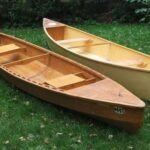Decking maintenance during winter is essential for keeping your outdoor space in great condition, even in harsh weather. When snow, ice, and freezing temperatures arrive, your deck can face a lot of stress. By taking the right steps, you can protect it and ensure it lasts for years. In this post, we’ll share the best practices for maintaining your deck during the winter months. These tips will help you avoid costly repairs and keep your deck safe and attractive.
Clean Your Deck Before Winter Arrives
Before winter fully sets in, make sure your deck is clean and free of debris. Leaves, dirt, and other materials can trap moisture, which may lead to mold, mildew, or rotting. Sweep the deck thoroughly and use a deck cleaner if necessary to remove tough stains.
Cleaning is an essential first step in decking maintenance during winter because it ensures the surface is ready to handle the challenges of cold weather. Remember to also clear debris from between the deck boards to improve drainage.

Apply a Weatherproof Sealant
Sealing your deck is one of the most effective ways to protect it from winter damage. A weatherproof sealant creates a barrier against moisture, preventing water from seeping into the wood. This step is especially important if your deck is made of natural wood, as untreated wood is highly susceptible to cracking and warping in freezing temperatures.
Make sure you apply the sealant on a dry day when the temperature is above freezing. A well-sealed deck will repel water and resist the effects of snow and ice throughout the winter.
Keep Snow and Ice Off Your Deck
Allowing snow and ice to accumulate on your deck can cause significant damage. The weight of heavy snow can strain the deck’s structure, while ice can lead to water damage when it melts.
Use a plastic shovel to clear snow regularly. Avoid metal shovels as they can scratch or damage the surface of your deck. For ice, choose an ice melt that is safe for your decking material. Avoid products containing harsh chemicals like rock salt, which can corrode wood or harm composite decking.
Inspect Your Deck for Damage
Decking maintenance during winter should include regular inspections for signs of damage. Check for cracks, loose boards, or nails sticking out. Even small issues can worsen during freezing weather.
If you spot any problems, address them immediately. Tighten loose screws, replace damaged boards, and fill cracks with wood filler or a suitable product for composite decks. Staying proactive helps prevent minor issues from turning into major repairs.
Protect Decking from Furniture Damage
Outdoor furniture can cause scratches and dents on your deck, especially when it’s exposed to freezing temperatures. To protect your decking during winter, consider storing furniture indoors or covering it with waterproof covers.
If storing furniture isn’t an option, use furniture pads or mats under the legs to prevent direct contact with the deck surface. This simple step can go a long way in preserving the condition of your deck.
Avoid Using Harsh Chemicals
When maintaining your deck during winter, avoid using harsh chemicals for cleaning or ice removal. These products can damage the finish of your deck or even weaken the material over time.
Instead, opt for eco-friendly and deck-safe cleaning solutions. If you need to melt ice, choose products specifically labeled as safe for wood or composite decks. Being mindful of the products you use ensures your deck stays in good shape throughout the season.
Trim Overhanging Branches
Overhanging branches can pose a risk to your deck during winter. Snow and ice buildup on branches can cause them to snap, potentially falling onto your deck and causing damage.
Trim back any branches that hang over your deck before winter begins. This precaution not only protects your deck but also reduces the risk of accidents during storms or heavy snowfall.
Keep Gutters and Drains Clear
Clogged gutters and drains can lead to water pooling around your deck, which increases the risk of water damage. Make sure your gutters and downspouts are clean and functioning properly before winter.
Redirect downspouts away from your deck to ensure proper drainage. This step is especially important for decking maintenance during winter, as freezing water can cause severe damage to both the deck and its foundation.
Check the Deck’s Support Structure
The support structure of your deck is just as important as the surface. During winter, freezing and thawing cycles can affect the stability of your deck.
Inspect the posts, beams, and joists for any signs of wear or weakness. If you notice anything concerning, consult a professional to assess and repair the damage. Ensuring the support structure is in good condition will keep your deck safe and secure during the colder months.
Conclusion
Decking maintenance during winter is all about preparation, care, and consistency. By cleaning your deck, sealing it, and staying vigilant about snow and ice removal, you can protect it from the harsh effects of winter weather. Following these best practices ensures your deck remains safe, attractive, and ready to use when warmer days return.











